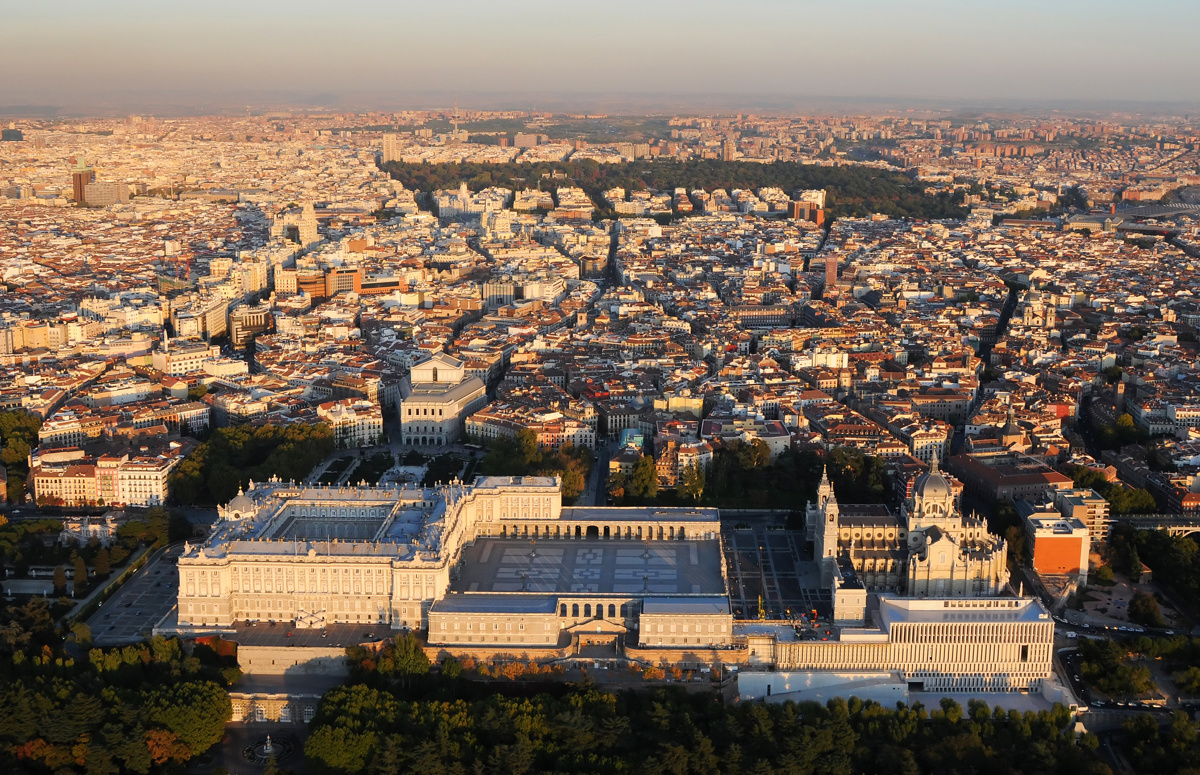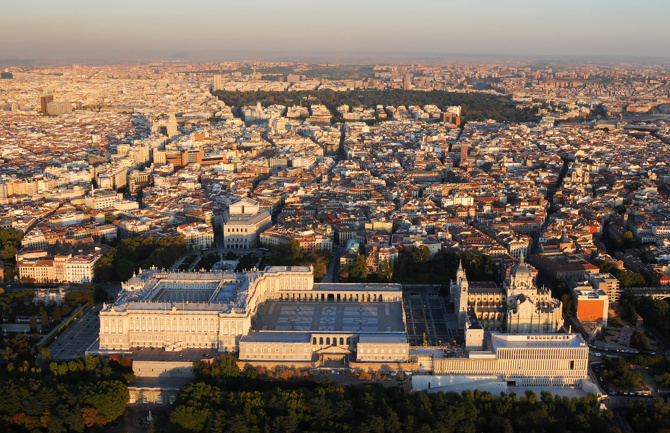Loading...
From an urban planning point of view, the project is based on two fundamental principles: on the one hand, the Royal Collections Museum must form part of the natural-artificial landscape of the western edge of Madrid, and on the other hand, it is necessary to maintain the open and public character of La Almudena and preserve the views of the parks and gardens under the western edge of the city.
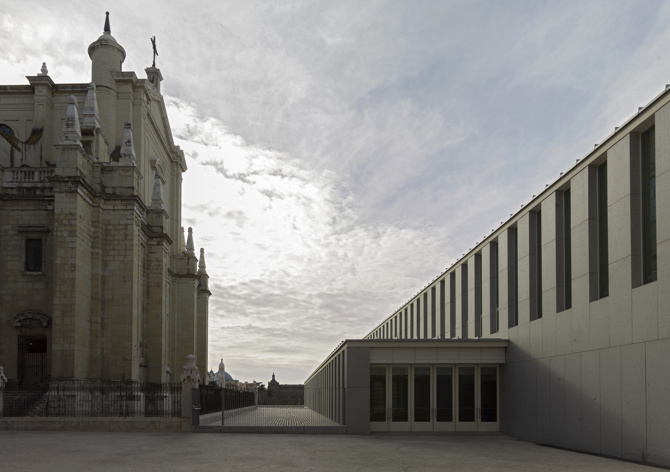
The museum, in its linear structure as an inhabited retaining wall, tries to reduce the objective environmental impact (physical and subjective - collective subconscious) on the monumental plinth of the Royal Palace. A simple and compact building, a construction aware that maximum flexibility and potential is only possible within a strict order, which uses the materials of the palace and its dignified construction as a characteristic, with a modern layout, heavy but light, opaque but transparent.
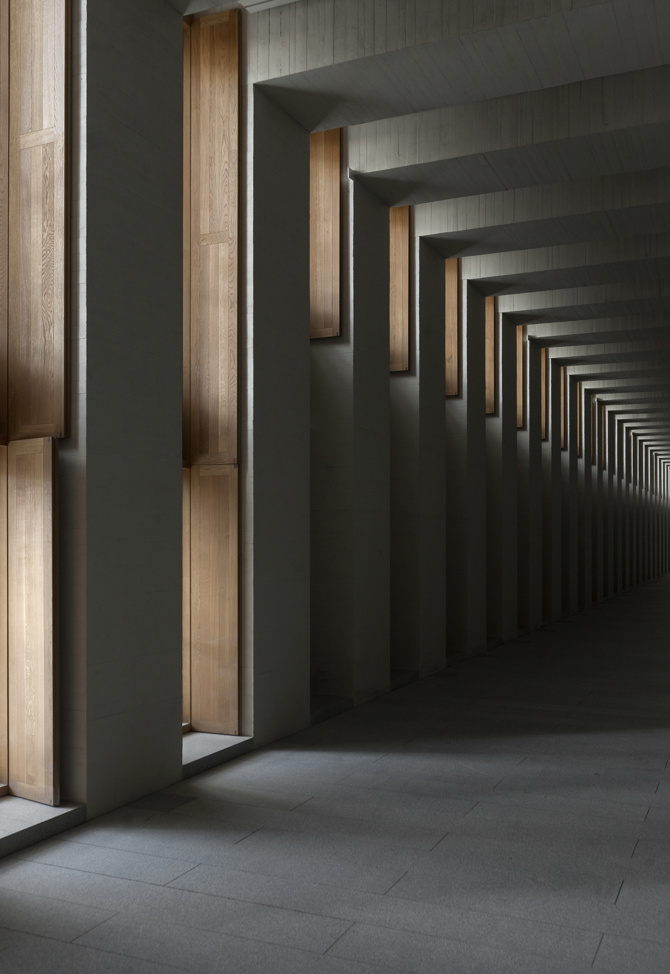
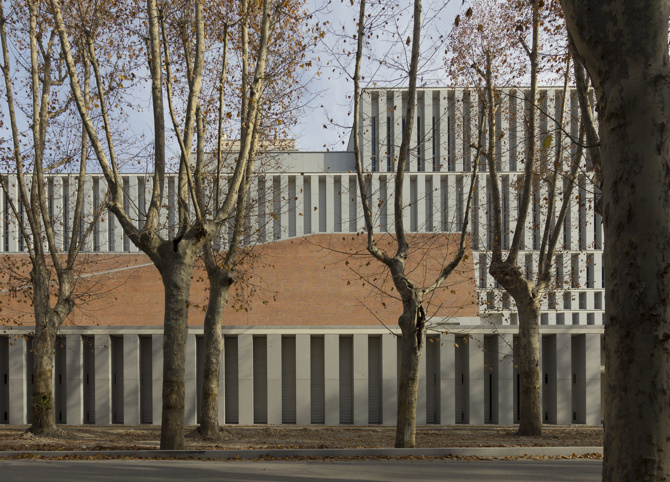
The three exhibition levels, which are the same and yet different, house three distinct collections: firstly, tapestries; secondly, paintings, sculptures and various objects; and thirdly, carriages. Each space is organised as a nave measuring 110 x 16 metres, flanked by the remains of the old city walls to the east and by a monumental latticework of huge granite pillars open to the west overlooking the Royal Gardens of the Campo del Moro. The views over the gardens are the space between the structures, just as the pillars are matter between the voids. The space is the rhythm of the beams, and the installations are the interface between what supports the building. Structure, lighting, views, space and infrastructure have blurred edges and interchanged attributes. The Royal Collections Museum is a plinth for the palace from the outside; a frame for views of the gardens and interior features.
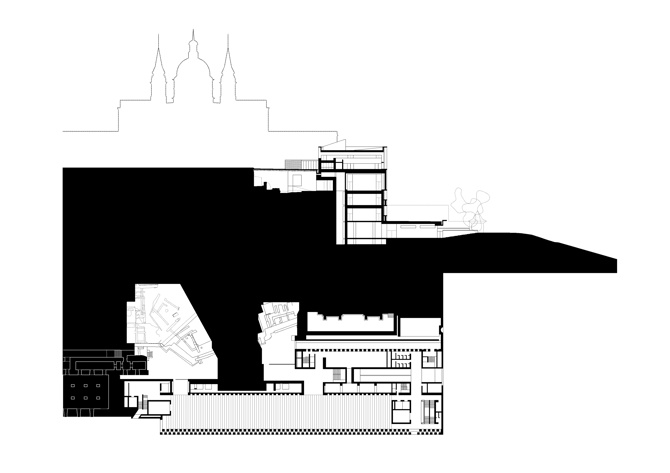
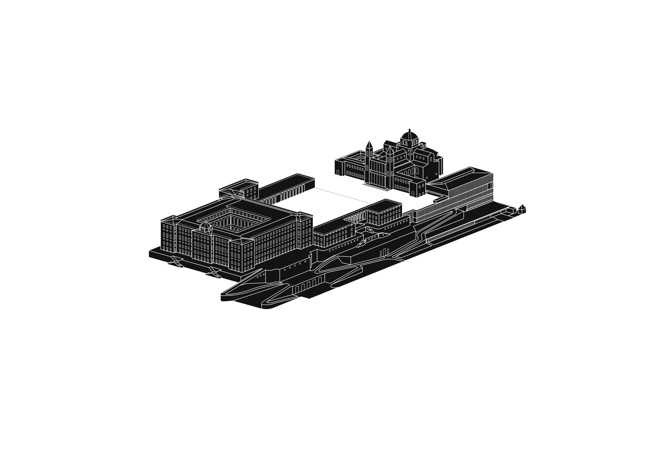
Ten years of work were divided into four construction phases: Foundations, Structure, Architectural envelope, Building finishes and installations. In the foundation phase, a retaining wall made of secant piles one and a half metres in diameter and 40 metres high supports the loads of the Madrid site. The white concrete structure is then formed with beams and columns measuring one metre by one metre. Light enters between the columns, and depending on the lighting needs of the interior, the pillars of the façade are aligned or shifted to protect the works of art.
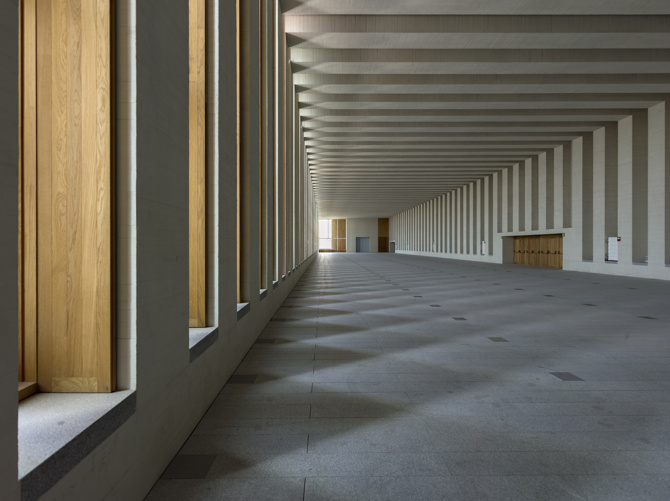
The dimensions of the exhibition rooms are 110 x 16 metres. The height depends on the level, the highest being eight metres for the needs of the tapestries. The materials of the façade establish a dialogue between the Royal Palace and the museum: concrete slabs with the horizontal limestone ones, granite columns with the vertical granite ones and the aluminium panels with the wooden shutters. Few materials, but of high quality, due to the historical context of the place, which must endure over time.
General information
Royal Collections Museum
YEAR
Status
Built
Option to visit
Address
St. Bailén,
28013 Madrid - Madrid
Latitude: 40.416088107
Longitude: -3.715447433
Classification
Built area
Collaborators
Santiago Hernán (Technical Architect)
Luis Baena (Technical Architect)
Carlos Martinez de Albornoz (Architect)
INTEMAC (Roberto Barrios I.C.C. y P.) (Technical Architect)
J.G. Asociados, Alfonso Redondo Gómez (Tax and legal advice)
Involved architectural firms
Information provided by
Tuñón y Albornoz Arquitectos
Location
https://serviciosdevcarq.gnoss.com/https://serviciosdevcarq.gnoss.com//imagenes/Documentos/imgsem/8d/8d53/8d536c5a-269c-4b38-b2aa-7c96e070db23/544684b4-162c-468b-a146-f7871f1809f2.jpg, 0000000807/039. IMAGEN 1.jpg
https://serviciosdevcarq.gnoss.com/https://serviciosdevcarq.gnoss.com//imagenes/Documentos/imgsem/8d/8d53/8d536c5a-269c-4b38-b2aa-7c96e070db23/f4be2bc8-88c3-45fe-9b8d-0e20713bb8f4.jpg, 0000000807/039. IMAGEN 2.jpg
https://serviciosdevcarq.gnoss.com/https://serviciosdevcarq.gnoss.com//imagenes/Documentos/imgsem/8d/8d53/8d536c5a-269c-4b38-b2aa-7c96e070db23/74995e6b-3839-43af-a4d3-a9b99e9d61b4.jpg, 0000000807/039. IMAGEN 3.jpg
https://serviciosdevcarq.gnoss.com/https://serviciosdevcarq.gnoss.com//imagenes/Documentos/imgsem/8d/8d53/8d536c5a-269c-4b38-b2aa-7c96e070db23/e334de76-7d41-4729-bd4d-424661ad10d9.jpg, 0000000807/039. IMAGEN 4.jpg
https://serviciosdevcarq.gnoss.com/https://serviciosdevcarq.gnoss.com//imagenes/Documentos/imgsem/8d/8d53/8d536c5a-269c-4b38-b2aa-7c96e070db23/fec6b37e-7c04-480e-b57d-c47f11274414.jpg, 0000000807/039. IMAGEN 5.jpg
https://serviciosdevcarq.gnoss.com//imagenes/Documentos/imgsem/8d/8d53/8d536c5a-269c-4b38-b2aa-7c96e070db23/b956bfb3-4244-42d7-bc56-90b4fbbfce42.jpg, 0000000807/039. AXO.jpg
https://serviciosdevcarq.gnoss.com//imagenes/Documentos/imgsem/8d/8d53/8d536c5a-269c-4b38-b2aa-7c96e070db23/92cdc638-e64e-4bf6-92a4-10d331c81c00.jpg, 0000000807/039. PLANTA SECCION.jpg
https://serviciosdevcarq.gnoss.com//imagenes/Documentos/imgsem/8d/8d53/8d536c5a-269c-4b38-b2aa-7c96e070db23/8f2b6216-2f73-4340-86f7-29d325e15173.jpg, 0000000807/039. CROQUIS.jpg
